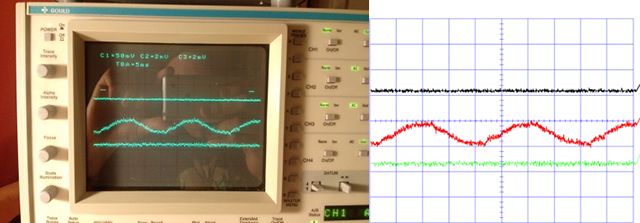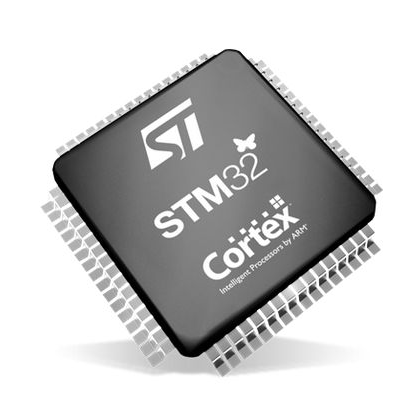
A friend of [Michael]’s said his company was getting rid of some old lab equipment and asked him if he wanted a very large and very old digital storage oscilloscope. A ‘hell yes’ and we’re sure a few beers later, [Michael] found an old Gould 200 MHz four-channel scope on his bench. Even 20 years after its production it’s still a capable tool, but the serial ports on the back got [Michael] wondering – would it be possible to plot the screen of the scope on his computer?
The scope has three ports on the back – GPIB, miscellaneous I/O, and RS423. The latter of those ports is similar enough to RS232 that a USB to Serial converter just might work, and with the help of a null modem cable and a terminal, [Michael] was able to connect to this ancient scope.
In the manual, [Michael] found a the serial commands for this scope. The most useful of these is a command that prints out the contents of the scope’s trace memory as a series of 1-byte integers. With a short bit of PERL programming, [Michael] can create a PDF plot of whatever is on the scope’s screen. It’s formatted perfectly for Gnuplot, MATLAB, or even Excel.
Awesome work, and especially useful given these old scopes are slowly making their way to a technological boneyard somewhere.















I’ve been working for wrong companies. The only things they ever get rid of are broken staplers and binders. )c:
Anyway, well done.
I’d collect them and sell them for scrap. Extra money is extra money.
Did you ever try interfacing a stapler to your computer?
I once stapled a computer to an interface. Or it might have been Blu-tak.
a
“Old”
a friend of mine works at technical uni and they often get rid of soooo awesome equipment…. disassembling equipment that used to cost $50 000 – $100 000 – priceless
also you notice that 15-20 yrs ago stuff was much better in terms of quality and was designed to LAST decades not a few yrs or months
Everything is like that. My 1999 Jeep is 80X better built than a 2013 jeep. Everything made in the past 5 years has been intentionally made to be “crap quality”.
There is a great analysis of ‘Survivorship Bias’ which you are falling for here:
http://youarenotsosmart.com/2013/05/23/survivorship-bias/
Its not that the old devices all were better quality, its just that only the good quality devices still exist, so it seems that 100% of (whats left of) them are better build quality.
S’true, 1999 was well into the “don’t build them like they used to” days, I remember the moans myself. Wasn’t planned obsolescence invented in the 1920s or thereabouts? About the same time they stopped using cast iron for everything.
WOW! Thank you for that link.
So attaching a RS232 to USB converter, and reading the manual is now a hack?
1993 is “ancient”? I’d better write a will!
.. what does that make 1980? ;)
What I find interesting is the graph created from the serial port output is higher resolution than what’s on the scope’s own screen.
wow… and here I’m using o-scopes from the 70s and 80s still at work. If it still works, we don’t get rid of it. Even if it doesn’t work we may not get rid of it. I would love to have a nice bench scope.
I use an old Philips PM-3200 (1969) 10Mhz analog oscilloscope that works like a charm and is enough for testing most analog devices.
The name of the Perl language is not an acronym. No need to write it in all caps.
PERL: practial extract and report language … whether or not to write in caps … it is an acronym :D
it’s a backronym … you’re right, ashes on my head :D
Holy shit. I have a scope just like this, only it’s by Siemens and it’s 100MHz.
It has a RS-423 connector on the back, too! I’m going to try this for sure.